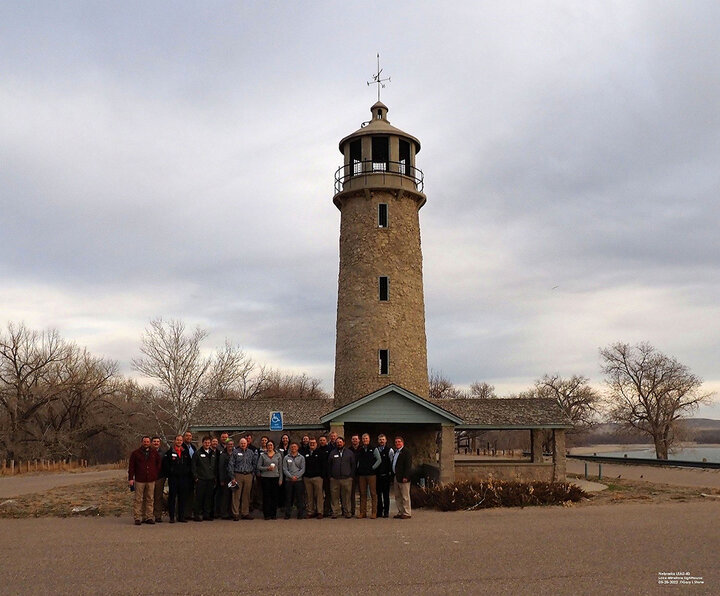Related Articles:
- Part 1: The North Platte River Basin Projects — Background
- Part 2: The North Platte Project – Pathfinder, Guernsey and Whalen
- Part 3: The Kendrick Project — Seminoe and Alcova
- Part 4: The Pick-Sloan Missouri River Basin Project — Kortes
- Part 5: The Pick-Sloan Missouri River Basin Project — Glendo
- Part 6: Other Dams, Reservoirs and Powerplants – Nebraska and Wyoming
The North Platte River Basin Projects — Background
The Platte River, then the North Platte River, and then the Sweetwater River were the series of water courses across Nebraska into Wyoming east of the continental divide for a pathway across the country that “followed the water.” This was the most traveled route across the continent for early trappers — the California, Mormon, Oregon, Overland and Pony Express trails. Over 400,000 people followed these trails to California, Oregon and Washington, bypassing the “Great American Desert”, not knowing that in the future — with irrigation water development — this area would be the breadbasket for the country.
The headwaters of the North Platte River are in north-central Colorado near Walden. The river flows north into east-central Wyoming between the Snowy Range and Sierra Madre mountains to Casper, Wyoming. Along this stretch of the river, the Medicine Bow and Sweetwater rivers feed the North Platte. From Casper, the river turns and flows southeast into Nebraska. Along this stretch of the river, the Laramie, Horse Creek, Rawhide and other smaller streams enter.
East of North Platte, Nebraska is where the North Platte and South Platte rivers form the confluence for the Platte River. From the headwaters to the confluence with the South Platte River, the North Platte River is approximately 716 miles in length. The river relies on winter snows/snowmelt in the mountains for its major water source.

Explorer John C. Fremont, “The Pathfinder,” led the way with his exploration of the west in 1842. His journal records the passage of his party through the “Big Cañon” on the North Platte River in Wyoming. This canyon would be the future site of one of the first dams constructed by the Bureau of Reclamation (formerly U.S. Reclamation Service). This dam and reservoir would be called Pathfinder.
President Theodore Roosevelt and western states congressional representatives realized that to populate the arid west, water for irrigation would be required. A drought in the late 1800s led to the Reclamation Act passed by Congress in 1902. With the passage of the act, the United States Reclamation Service was created within the U.S. Geological Survey (USGS).
The Reclamation Service began about 30 water development projects from 1902 to 1907 in states with Federal lands. In 1907, the Reclamation Service was separated from the USGS and created a separate bureau under the Department of the Interior. In 1923, the Reclamation Service was renamed the “Bureau of Reclamation”.

Reclamation construction projects occurred during the Depression and 35 years after World War II. During the Depression, the Emergency Conservation Works (ECW), which later transitioned to the Civilian Conservation Corps (CCC) camps were assigned to the Bureau of Reclamation. The workers in these camps developed recreational facilities, planted trees, built ditches, killed gophers and built roads. One of the recreational structures in western Nebraska is the lighthouse located at the Lake Minatare state recreational facility and part of the North Platte National Wildlife Refuge. Currently, the Bureau of Reclamation operates about 180 projects in 17 western states.
For those who would like to see firsthand most of the dams and reservoirs presented in this series, the Scottsbluff/Gering United Chamber of Commerce will host a water tour along this stretch of the river in Wyoming. The tour dates are Tuesday, Aug. 16 and Wednesday, Aug. 17. Space is offered on a “first come, first served” basis and fills fast. This is an outstanding opportunity to visit western Nebraska and understand where the water comes from and its many uses. For more information, contact the chamber at 308-632-2133.
Still the question from my Water Law 101 series, what is water worth?
References
Autobee, Robert, “North Platte Project,” Bureau of Reclamation, 1996.
Dudley, Shelly C., “The First Five: A Brief History of the North Platte Project,” www.waterhistory.org.
“The Bureau of Reclamation – A Very Brief History,” U.S. Department of the Interior, Bureau of Reclamation.
